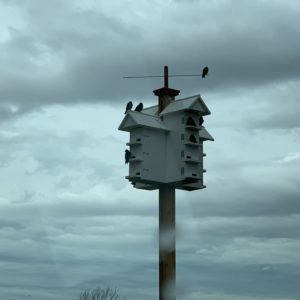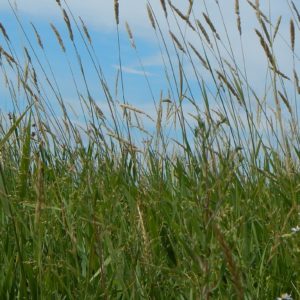Herping Around with the Blanding’s Turtle
the blanding’s turtle
The shell of a Blanding’s Turtle is medium-sized, dome-like and resembles that of an army helmet; which is unlike most other turtles that have a wide, flatter shell. It is easily identified by its bright yellow throat, chin and shell underbelly. Its shell has black to brown yellow flakes and streaks and can reach up to 27 cm long. Apart from its bright yellow throat, its head and limbs are black-grey. Unlike other Ontario turtles, the Blanding’s Turtle can completely close their shell after pulling in their head and feet, because the bottom of the shell is hinged. This is very useful when the Blanding’s Turtle is in danger!
Where can i see one?
The Blanding’s turtle lives in the Great Lakes Basin, with a few other populations in the United States and elsewhere in Canada. It is found in shallow water, usually in large wetlands and shallow lakes with lots of plants. If you see one a few hundred meters away from the water, do not panic, as they often venture to find a mate or nesting site! When in hibernation, they are in the mud at the bottom of permanent water bodies, from the Late October to end of April.
What’s interesting, is that the female species do not mature until at least the age of 14, with individuals living to be over 75 years old! That’s old for something so small! The female will lay up to 22 eggs in late May or early June after excavating a nest in a sunny area with good drainage. Hatchlings three to four centimeters in length, emerge in the fall and the incubation temperature of the eggs determines the gender of the offspring! Blanding’s Turtles are omnivorous (feed on plants and animals), specifically on crayfish, insects, fish, frogs and a variety of plant material. Different from other aquatic turtles who feed exclusively in the water, Blanding’s Turtles feed both in the water and on land.
status in canada
Blanding’s Turtles are threatened primarily due to the destruction of wetlands, their home. Not only this, but shoreline development can destroy nesting areas and disturb the land beside the water. Since Blanding’s Turtles can wander from the water a few hundred meters, that creates a new threat if the turtle ends up on the road. The more that they wander on the road, the more likely they are to be crushed. This is especially harmful to the females who need to return to the nest. Shockingly, this is one of the species that people remove from the wild to use as food or as pets!
How you can help!
If you see a Blanding’s Turtle, report the sighting! This will hopefully help the city create signage for drivers or pedestrians, so that everyone can be more careful around that area! Also, you can volunteer with your local nature club or provincial park in surveys focused on species at risk. And if you live on property near the habitat where Blanding’s Turtles can be found, you may be eligible for stewardship programs that support the protection and recovery of the species and its habitat. As well, if you are interested in purchasing a turtle, never buy a native species of turtle, or any that have been caught in the wild. If you see a turtle for sale that came from the wild, REPORT immediately. If you are reporting illegal activity regarding plant or wildlife, call 1-877-TIPS-MNR (847-7667). Lastly, share this so that your friends and family can learn about the danger that the Blanding’s Turtle is in, and how they too can help!



